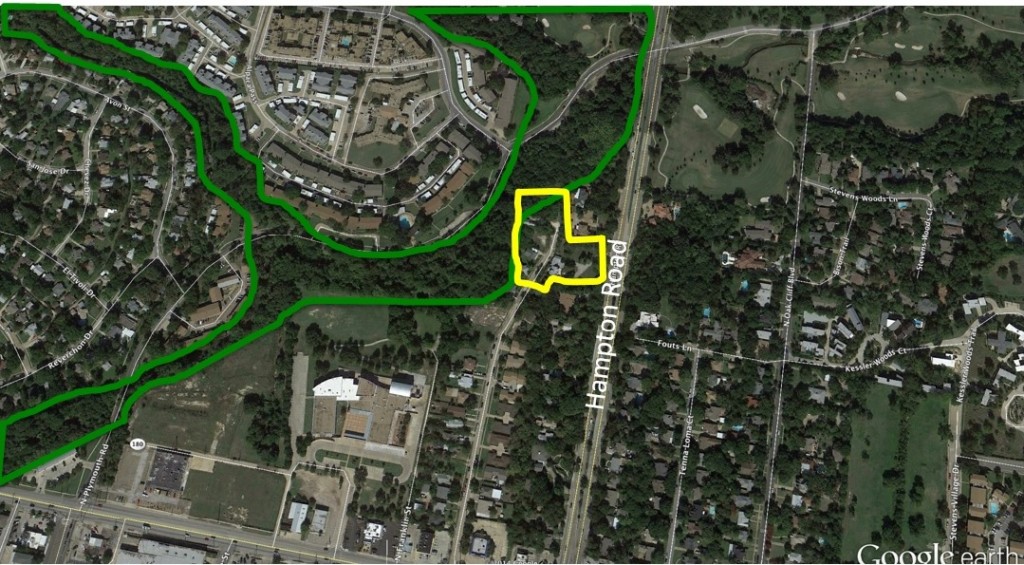Christian Chernock is petitioning the City of Dallas to allow him to build a 100-unit apartment complex, four 8-Plex apartment buildings and 13 houses on 10 single-family parcels. (Case numbers Z234-244 and Z234-249). This proposed development, plain and simple, is high density multi-family right in the middle of a well-established single-family neighborhood. It will have 150 units total and density that is 10x greater than the current zoning.

Color-coded map illustrates current land use patterns. For orientation purposes, Hampton runs top to bottom near the center of the image. The yellow area near the center of the image is the proposed development that is surrounded mostly by the single-family parcels of both the West Kessler and N. Boulevard Terrace neighborhoods. Even though there are some other developments on the outer edges of this neighborhood, their density is 1/3 to 1/10 of the proposed density.
It is important to understand, that he was previously denied a rezoning request by the City Council but since then our tax money built him a $2M dollar bridge that required seizing land by eminent domain and he now sits on the Plan Commission. Regardless of the serious ethical questions that exist, a quick review of the color-coded map above makes it clear that that this rezoning request is contrary to a greater comprehensive land use plan. Moreover, the rezoning request disregards established buffer zones that exist between multi and single-family districts within the area.

The power bestowed to local municipalities to regulate land use comes directly from our State Constitution. Home owners whose home frequently represent their single largest asset, commit to 15, 20 or 30 year mortgages to procure their homes. These home owners have a reasonable expectation that the single-family district into which they have invested will not be drastically rezoned such that it would unduly impose on the use and enjoyment of their property. In fact, Texas statute says that zoning should be “in accordance with a comprehensive plan” designed to “lessen congestion”, promote safety, health and welfare, provide “light and air, “prevent overcrowding,” avoid “undue concentration of population,” and facilitate transportation, utilities and other facilities. (TEX. LOC. GOV’T CODE §211.004)